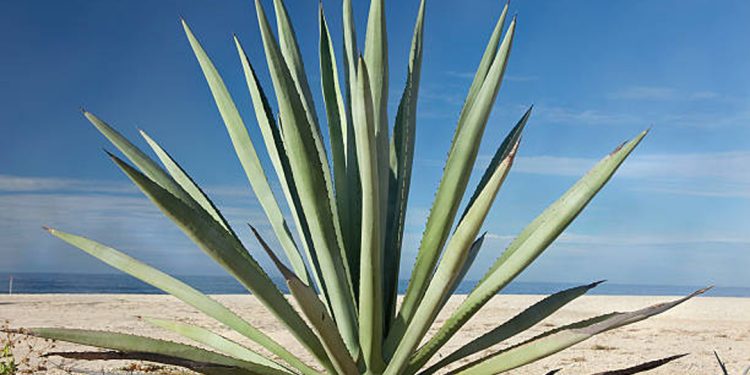A tender succulent whose rosettes of spiky grey-green leaves are 1-2 m high (3-6 ft.) with a spread of 2-3 m (6-10 ft.). The tall bell-shaped flower spikes, resembling small trees, rise to 8 m (26 ft.). Agaves should not be confused with aloes, and are not botanically related.
History and traditions
Agave comes from the Greek for admirable. It gained the name “century plant” from the mistaken belief that it flowers only after a hundred years but most bloom after ten years.
Related species
Americana ‘Variegata’ is a cultivar with yellow margins to the leaves.
Growth
Needs well-drained soil, full sun and a minimum temperature of 5°C (41°F). Propagate by offsets. In cool climates it can be grown as a conservatory plant but takes up a lot of space.
Uses
Medicinal
The sap has anti-inflammatory properties, and is applied externally for burns, bites and stings, by breaking open a leaf.
General
The root has cleansing properties and is used for washing clothes and in commercial soap production. Fibers are woven into rope. The powdered leaf makes snuff and the whole plant is much employed as a stock-proof fence.










